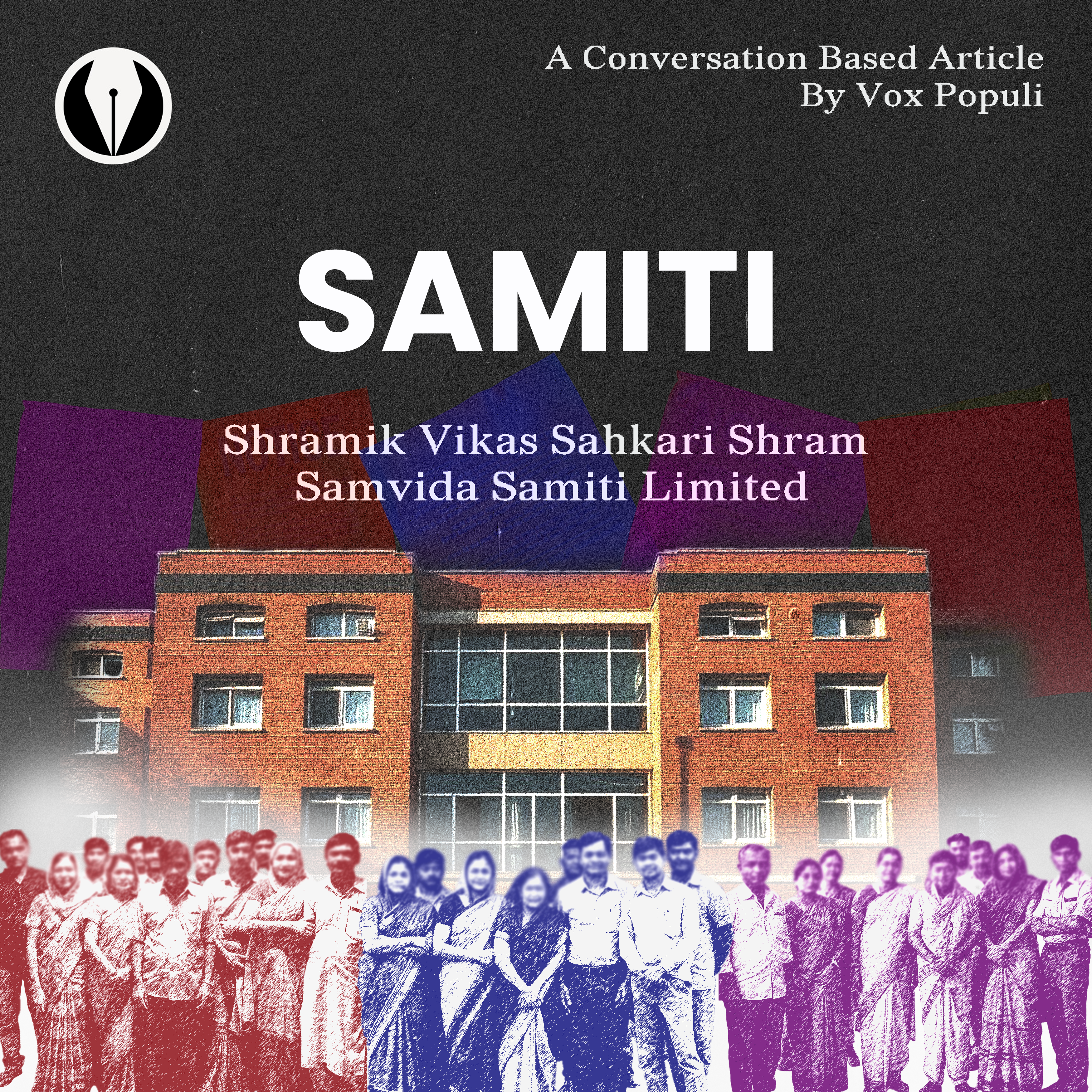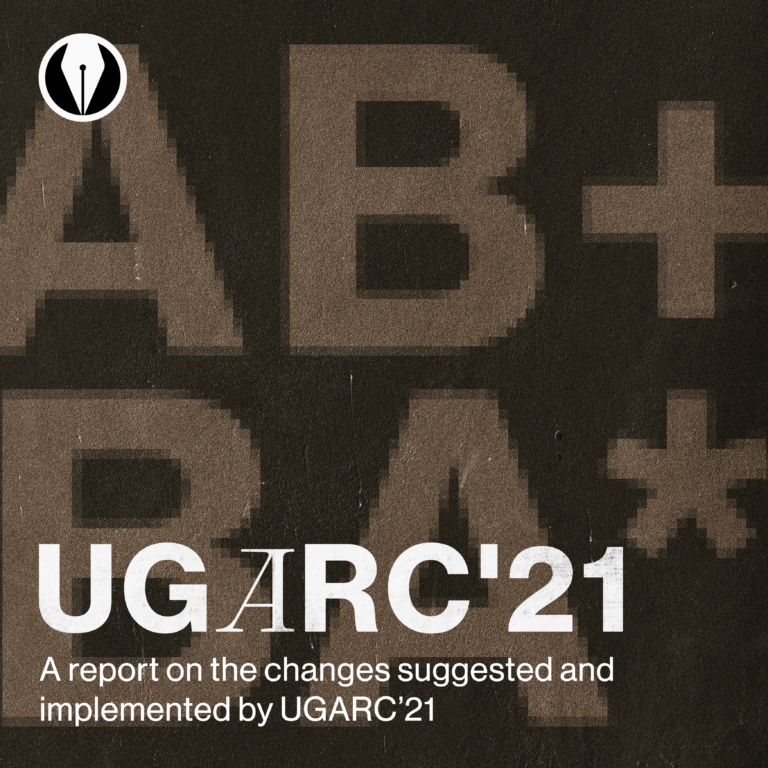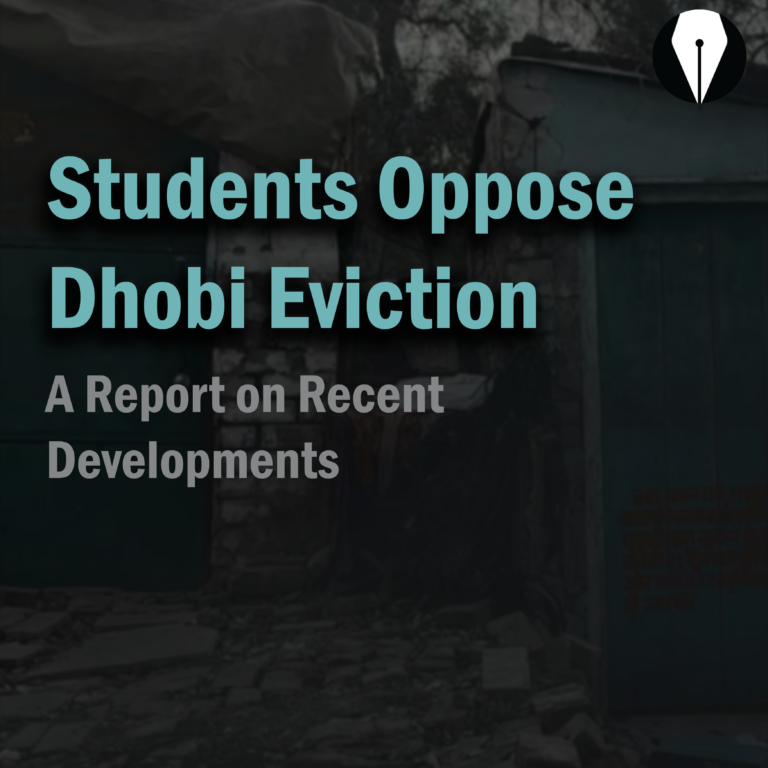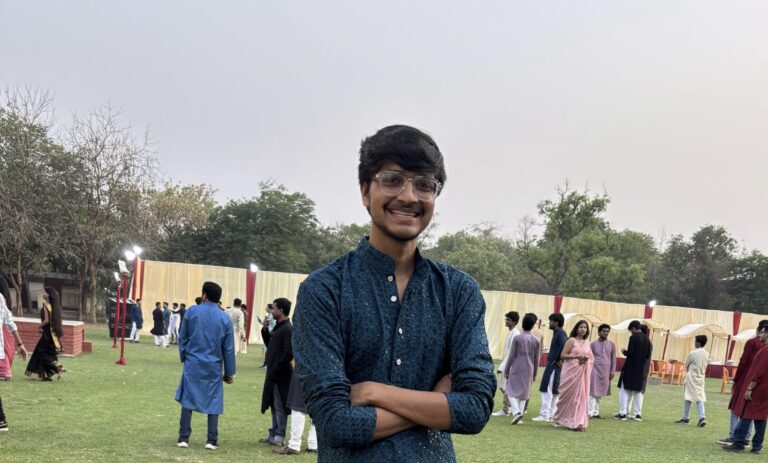Disclaimer: Vox Populi, IIT Kanpur, is the exclusive owner of the information on this website. No part of this content may be duplicated, paraphrased, or interpreted in any other way without written consent from Vox Populi. If you want to reproduce any of the content on this page, please contact our chief editors directly or reach out to us by email at voxpopuli@iitk.ac.in
This article is based on our conversation with Mr. Suresh, the Secretary of the Samiti.
What do you think of when you hear the word “cooperatives”? If our guess is correct, Amul is the first name that comes to mind. Cooperatives—in simple terms, businesses that are owned and controlled by their members—are a familiar concept. However, you might not know that one such workers’ cooperative exists at IIT Kanpur. Shramik Vikas Sahkari Shram Samvida Samiti Limited, more commonly referred to as Samiti, is a workers’ cooperative predominantly made up of sanitation workers at IIT Kanpur. In this article, we explore its formation, operations, current structure, and the challenges it faces.
History
In a previous Vox article titled “Prayas and Its Beginning” published on March 29, 2014, we spoke with Mrs. Vijaya, whose contributions were integral to the establishment of Samiti. The following excerpt from that conversation highlights her role:
“Mrs. Vijaya Ramachandran, or Vijaya didi, as she is affectionately known, came to IIT Kanpur in 1968 with her husband, Prof. R. Ramachandran of the Physics Department. Few people know that she is not only the inspiration behind Prayas but has also actively fought for workers’ rights on campus. Even fewer are aware that she is the daughter of former President of India, Dr. R. Venkataraman.”
After interacting with her housekeeper’s son, she realized that there was a stigma among faculty about their children studying alongside underprivileged students. This observation played a pivotal role in inspiring the concept of the Opportunity School. Her connections at the school helped her learn more about the workers’ families on campus and the issues they faced—particularly regarding their pay.
Between 1988 and 1989, during her interactions with institute workers, she discovered that instead of receiving the officially mandated income of ₹32.60, they were paid a mere ₹16. Determined to address this disparity, she made it a focal point of discussions among the workers. This collective action eventually led them to mobilize and confront the contractors over the payment of minimum wages. Although the contractors temporarily agreed to the stipulated wages, the relief was short-lived, and workers continued to face problems such as irregular payments and unsafe working conditions. These persistent grievances eventually spurred the workers to consider forming a union, which led to the establishment of Samiti.
Formation
As these issues persisted, the groundwork for forming a workers’ society was laid in March 1991 with support from Mr. Suresh, then working with Nankari Samaj Kalyan in Nankari, Kanpur. He was approached by students and members of the campus community—including worker g Vishnu Shukla, a worker and Abhay Shukla, son of Professor A. P. Shukla. In March 1992, a workers’ society was officially established.
Initially, the administration refused to assign any work to the newly formed society. Finally, in May 1992, the then Director, R. C. Malhotra, granted permission to form a workers’ cooperative—what we now know as Samiti.
Evolution
Acquiring work contracts has been a significant challenge for Samiti since its inception. The first type of work assigned to Samiti was sanitation; during a trial period, they were also given some maintenance tasks. Although construction workers constituted a significant portion of Samiti’s membership, they were not assigned construction projects. In 1993, the cooperative organized a hunger strike to pressure the institute into awarding them construction work. The protest, which saw the participation of 400–500 students, faculty members, and workers, eventually led the institute to agree to their demands.
The campus’s student community has long supported Samiti and its workers. For example, in previous years, students in Hall 4 directly assigned painting work to Samiti workers—without any involvement from a contractor or the institute—paying them out of their own pockets. Later, the institute began recruiting manpower from Samiti for various labor tasks and even awarded the contract for the Hall 4 mess for a brief period.
Unfortunately, over time, Samiti lost many of its work profiles and became limited primarily to sanitation work. The Hall 4 mess contract was revoked after a year when the hall administration changed. Further setbacks arose when an official from the Institute’s Works Department (IWD) modified a CPWD norm. According to Central Public Works Department (CPWD) norms, labor cooperative societies can undertake projects valued up to ₹50,000. However, a new institute policy stipulated that tenders would only be floated for contracts exceeding ₹75,000—effectively excluding Samiti from many opportunities, as most of their work fell below this threshold. Additionally, a new rule mandated that manpower could only be supplied by registered companies rather than cooperatives. These setbacks restricted the scope of the Samiti’s operations, forcing them to adapt to a narrower range of work.
Current Structure and Working
Samiti comprises two tiers of membership: general body members and a board of nine members elected from the general body. The general body is predominantly made up of sanitation workers, with a smaller number of mess and construction workers; approximately 8–10 of its members are women. To promote inclusivity, the board of directors has reserved seats: one for a Scheduled Caste (SC) representative, one for a member from the Other Backward Classes (OBC), and two for female members. Elections are held for the positions of chairman and vice-chairman, who represent Samiti. An appointed secretary handles tenders, finances, profit distribution, and other administrative tasks.
Criteria for Joining Samiti:
- Work Experience: Applicants must have prior work experience.
- Substance Use: Applicants must not have a history of frequent alcohol or other intoxicant consumption.
- Age Limit: Applicants should be between 18 and 58 years old.
- Conduct: Applicants are expected to behave respectfully toward everyone and avoid arrogance.
Those who meet these criteria must complete an application and pay a nominal joining fee of ₹50. Once processed, they can purchase shares at ₹100 per share, with a cap of 250 shares per person.
Currently, Samiti handles the sanitation work for Halls of Residence 2, 3, 5, 7, 8, 9, 10, 11, 12, 13, and 14, as well as for certain parts of the academic area.
Samiti’s financial management follows a structured approach. A portion of the profits from contracts is distributed among the workers, but a significant part is reserved for future use. Specifically,
- 25% of the earnings are set aside as a reserved fund for upcoming projects or unforeseen expenses.
- 7.5% is allocated to an unemployment fund to support workers.
- 1% goes to the cooperative education fund (which is contributed to the cooperative department of the Government of Uttar Pradesh).
- 10% is distributed as a dividend to shareholders.
- 10% is allocated to a health fund to assist workers with medical needs.
- 10% is directed toward the building fund for maintaining and improving Samiti’s office infrastructure.
- The remaining funds are reserved as gratuity for retiring members.
Problems
During our conversation, Mr. Suresh mentioned that there were discussions about removing Samiti from the sanitation contract—a proposal that led to an uproar among the workers. A protest in 2022 involving nearly 1,000 people ensued, which ultimately resulted in the contract being retained by Samiti.
When asked about the support from the administration and the student community, Mr. Suresh opined:
“The institute has a problem with Samiti because it is a cooperative of workers. If we start getting work in all domains, the institute will have to address our collective demands. It’s easy to handle scattered, contract-based workers, but a united front like ours poses a threat to them. As for student cooperation, it has become almost negligible over the past few years. It’s a sad testament to our current condition. If this campus community doesn’t support us, we will soon be out of work.”
Samiti’s journey at IIT Kanpur reflects the complexities of balancing institutional policies with the aspirations of workers seeking fair opportunities. While the cooperative has provided a platform for workers to unite and strive for better conditions, it has faced significant challenges in maintaining its position and scope of work. The evolving relationship between Samiti and the institute highlights broader issues surrounding labor rights, contract policies, and governance.
Written by: Kumar Shubham, Yeva Gupta, Sanchit Arora, Divyanshi Agnihotri
Edited by: Kaushal Jain, Kushagra Srivastava
Design Credits: Sameer Barnwal









